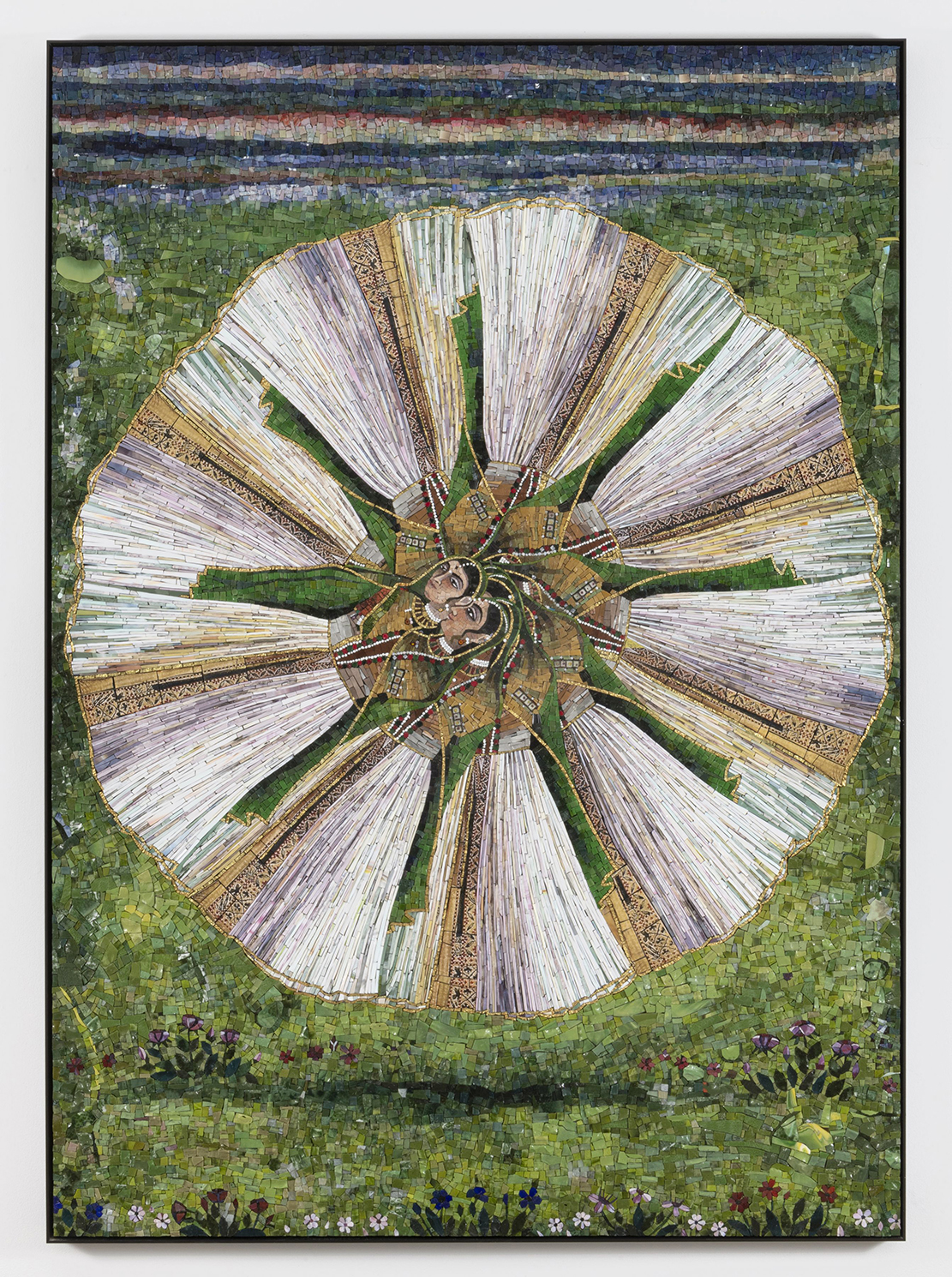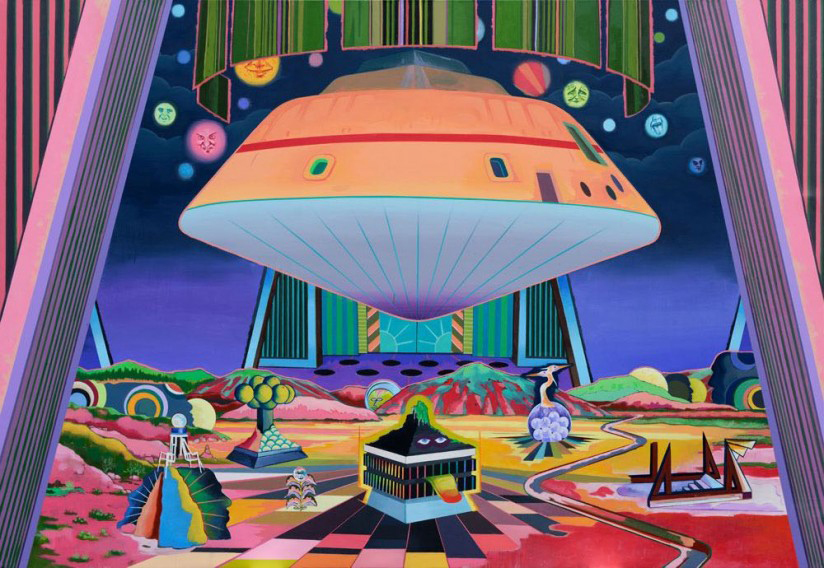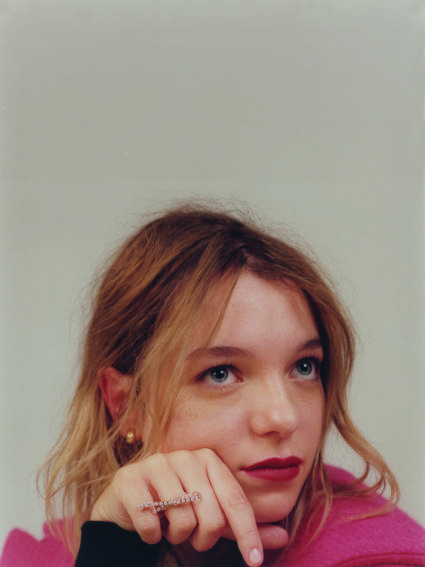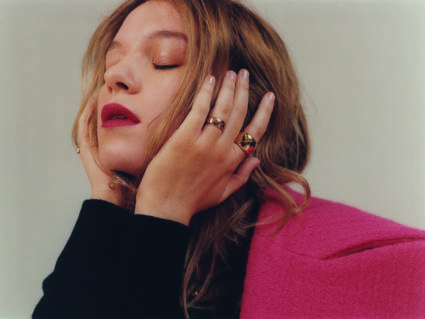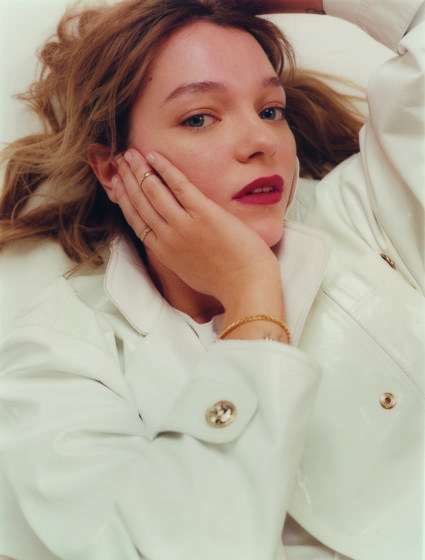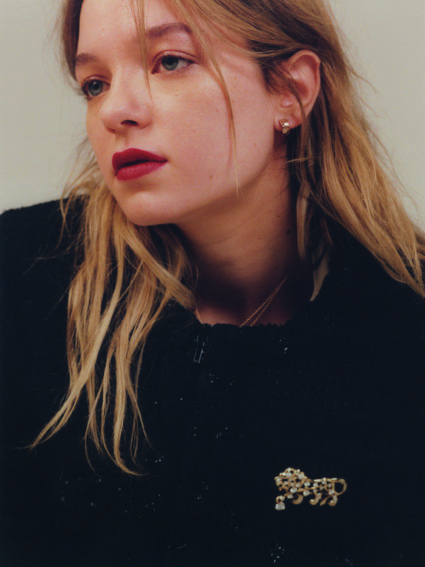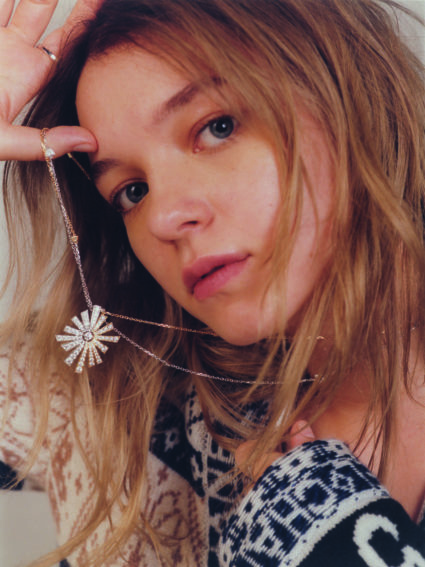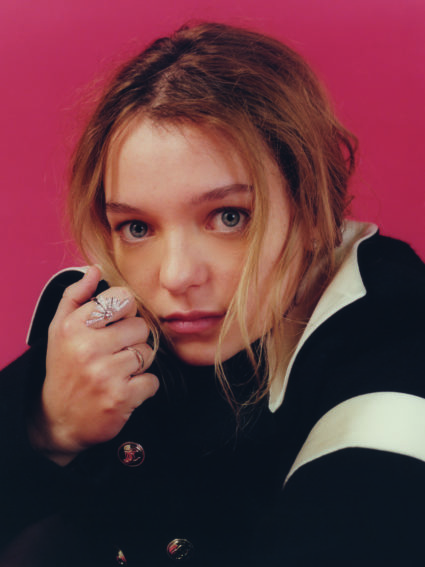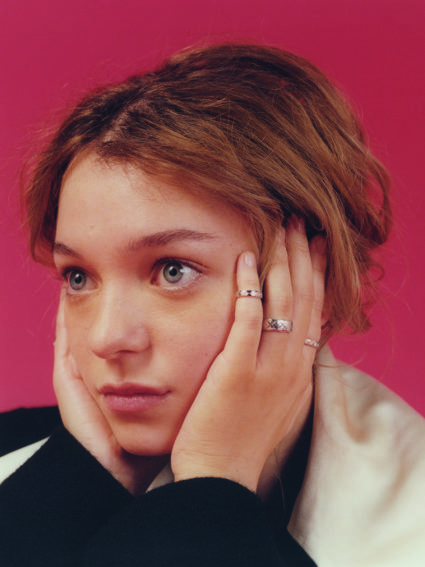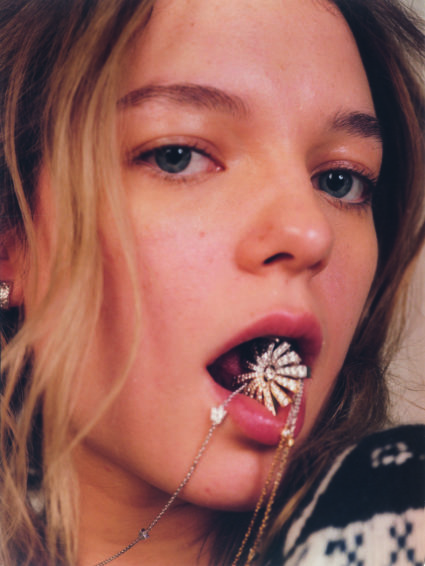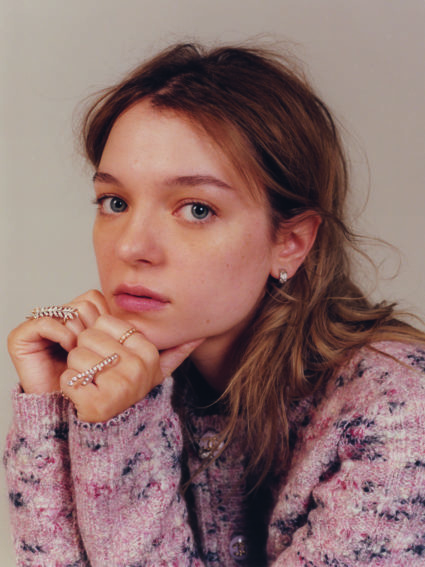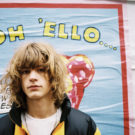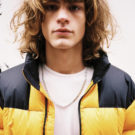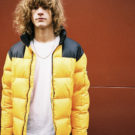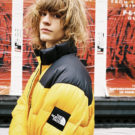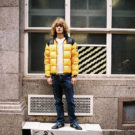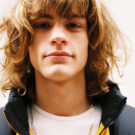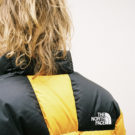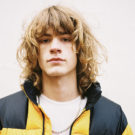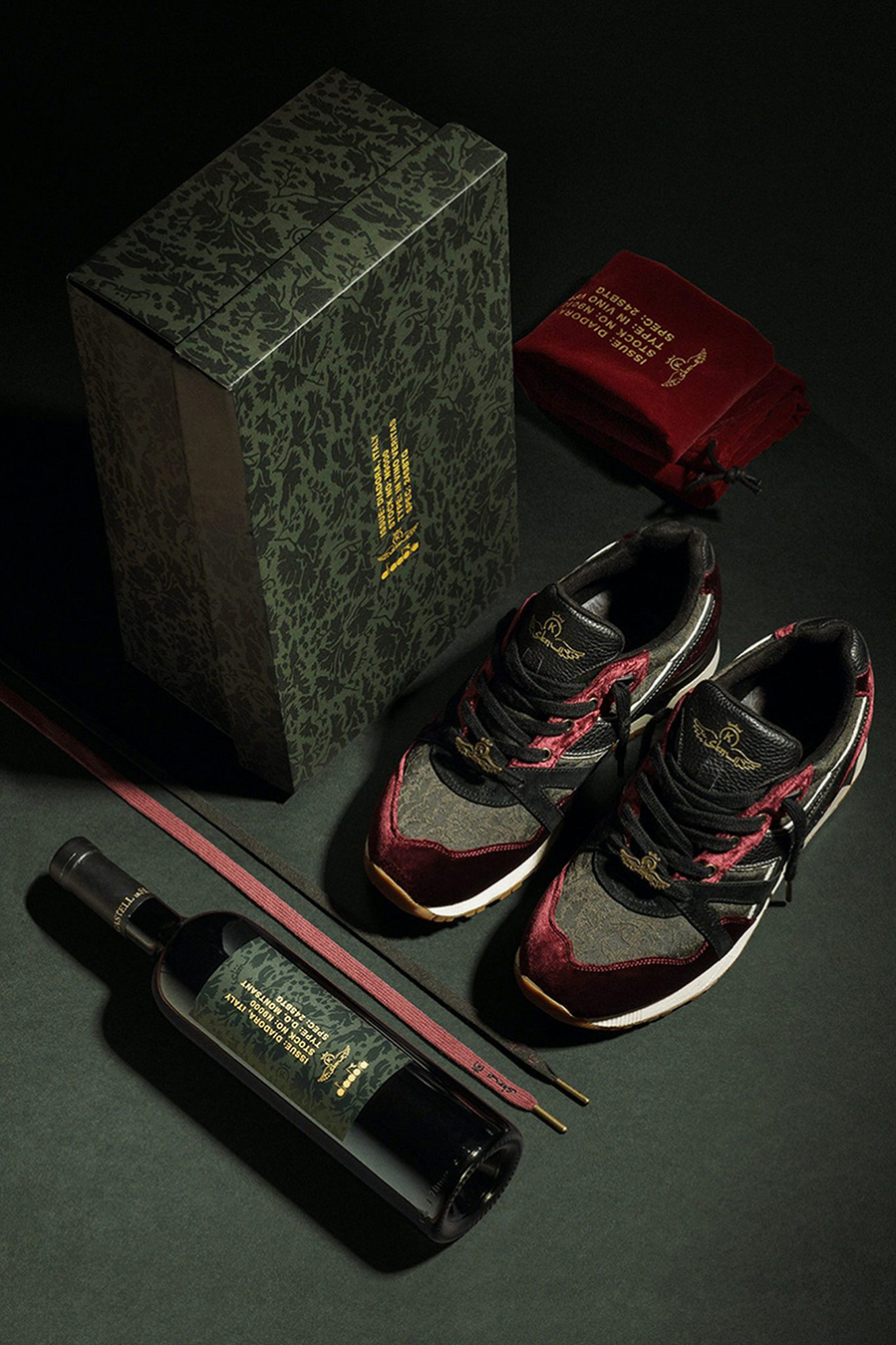Posted on
2020-11-09
Esme Creed-Miles’ directorial debut is utterly striking. After success in Dark River and Hanna, Creed-Miles turns 20 and turns the camera on herself – starring, writing and directing in the 14 minute short Jamie. Drawing from her own battle with bulimia and shot beautifully on 35mm film, there are moments when it almost feels like you’re watching a moving Corinne Day image, which is fitting with Tara St Hill styling. Not only does this intelligent passion project continue to establish Creed-Miles as a fierce, undeniable talent but also as someone with something important to say.
In your directors statement for Jamie you call the film a ‘confession and a plea for understanding’. What made you want to create something so introspective? Was it hard being so raw and personal?
There was a moment when we finally had the Vimeo link with a final cut, that I felt super intimidated by people seeing me like that. I’m a slight girl and I always wanted to appear naturally so cool and aloof, unfortunately, this is not the case; excruciating effort has gone into (and sometimes still does) being thin. Now everybody knows about my bulimia, people watch me eat, they worry about me when I’m fine, commend me when I’m not and being honest about it (commendations being the least of my concern when depressed). But the project isn’t brave (I don’t want this adjective ever associated with eating disorders or suicide, having previously venerated them this way myself), the film was simply the way most, if not all, artists use themselves to tell stories, as a mirror to their world, to be heard and to be seen.
Jamie is essential viewing for young women. Three minutes in and I had already forwarded it on to my closest girlfriends, some of whom suffer with eating disorders and depression themselves, urging them to stop everything and watch. It’s unbearably honest, at times too relatable, but also empowering. Was the experience cathartic for you?
I think with the aims of a film like this, it’s important to consider the viewers catharsis as much as my own; which reminds me of Maggie Nelson’s investigation of catharsis in The Art of Cruelty. The catharsis-as-cure rhetoric, she describes, has mostly been trialled by society and bearing little fruit she notes how even Freud eventually abandoned it. She talks about Sontag too, how an image procured emotion sidesteps the issue
that this isn’t the same thing as understanding, nor taking action. So, was the project cathartic? Was it cathartic to an audience? I don’t know but it’s irrelevant. I did experience a rare moment when filmmaking where my desire to make good art succeeded my desire to look good. That made me feel powerful. I can only hope it provides a tiny sense of reality against the backdrop of social media’s simulation. I, however, am not naive enough to believe shock equals action.
Your breakout role was at just six years old in Harmony Korine’s Mister Lonely. What’s your favourite memory from that first experience on set?
In all honesty I don’t remember much, but I remember the feeling of magic. Because that’s what sets were to me as a kid – magic.
Let’s talk about Hanna – a girl absolved of convention, completely unconditioned and free. How did it feel playing such a badass?
I must say – beating people up without consequence is cathartic. And admittedly empowering. But let’s just call it defence shall we – defence without consequence.
I want to talk to you about your thoughts on feminism and the male gaze. Going back to your director’s statement for Jamie you question, ‘why does she feel her body is a sexual instrument, one detached from her mind?’. Did you find any answers?
There are many answers to this question, thoughtful and intelligent ones. I recommend: John Berger, Maggie Nelson, Julia Kristeva and of course Simone de Beauvoir. But for me, being inundated by commercial images of women, styled as objects of consumption, contributes to a disassociation between my physical experience and immaterial one. I continually watch myself, contort and control my image to feel seductive. Despite knowing this, and the desire to refute it, sexuality is a socially and biologically donned currency which, when threatened, makes me feel my survival is compromised.
How have you found a balance between being an introvert and navigating fame, modelling and social media?
When crippling insecurities present themselves, these things are not easy. But my lifestyle has changed very little. I don’t go out much, I am rarely recognised, I don’t really attend glamorous events. I am pissed to have discovered that more followers has not equalled more friends, but unfortunately social media is a career pre-requisite. (Perhaps that’s an excuse and I should delete it right now.)
Tell me more about your blog Logic at the Edge. As a lover of both Rothko and Anne Carson’s work your recent piece was a fascinating read.
Thank you! I seriously did not think anyone would pay attention to that; the blog has been a little neglected as of late. It only has two entries, because I’m both a slow writer and incredibly slow reader. When I have finished every episode of real housewives I can find, (my preferred disassociation method), I hope to write another essay.
PJ Harvey’s track Horses In My Dreams was the perfect choice to end Jamie. You recently posted an Elizabeth Cotton cover on your Instagram and teased original music is on the way. Who are your major musical influences? What type of sounds are you making?
Harvey has been my idol since I can remember, so for her to give this song to Jamie, let alone to watch and respond to the film, was very gratifying. PJ is also greatly responsible for my passion for playing. I can get by on guitar and have written music for a long time. I’m nervous about it though and my writing partner Kit Moseley, a phenomenal musician, has really helped me develop a sound. I’m influenced by Warpaint, Cat Power, Thom Yorke, Elliot Smith and Vincent Gallo’s early soundtracks to name a few.
Can we expect more directing in the future, what’s next for you?
Along with acting I have been developing a screenplay for the past two years. It’s an adaptation of a classic French book (which I cannot not disclose). It’s a timeless and visually potent novel which I cannot wait to translate on film.
Words – Lo Harley
Photography – Annie Lai
Fashion – Kingsley Tao
Hair – Hirokazu Endo using Oribe
Make-up – Michelle Dacillo using Les Chaînes D’Or de CHANEL and Sublimage L’Extrait De Nuit
Nails – Marta Nagorska using CHANEL Le Top Coat and CHANEL La Crème Main
Talent – Esme Creed Miles at Kate Moss Agency
Photography Assistant – Ed Philips
www.chanel.com
